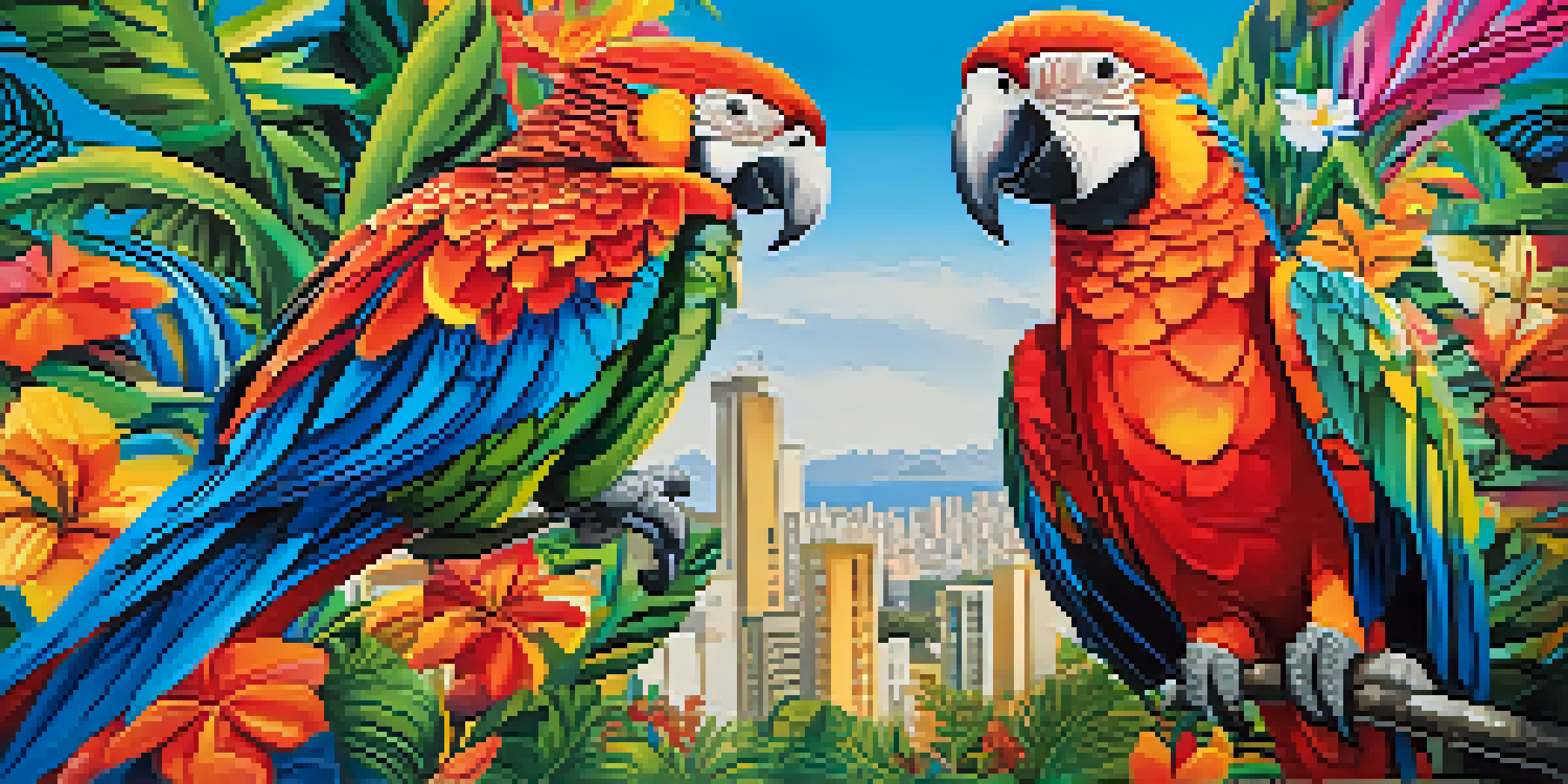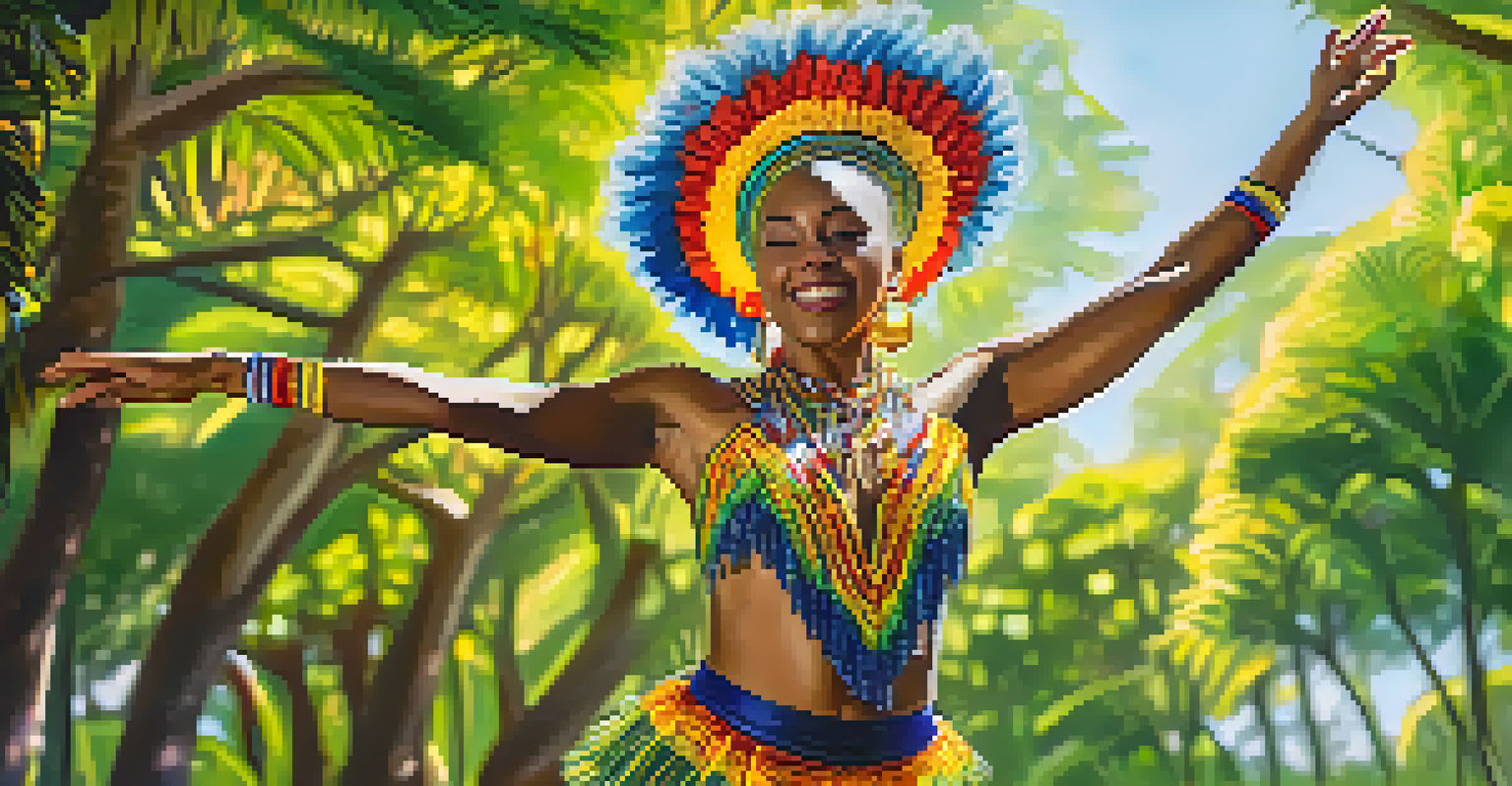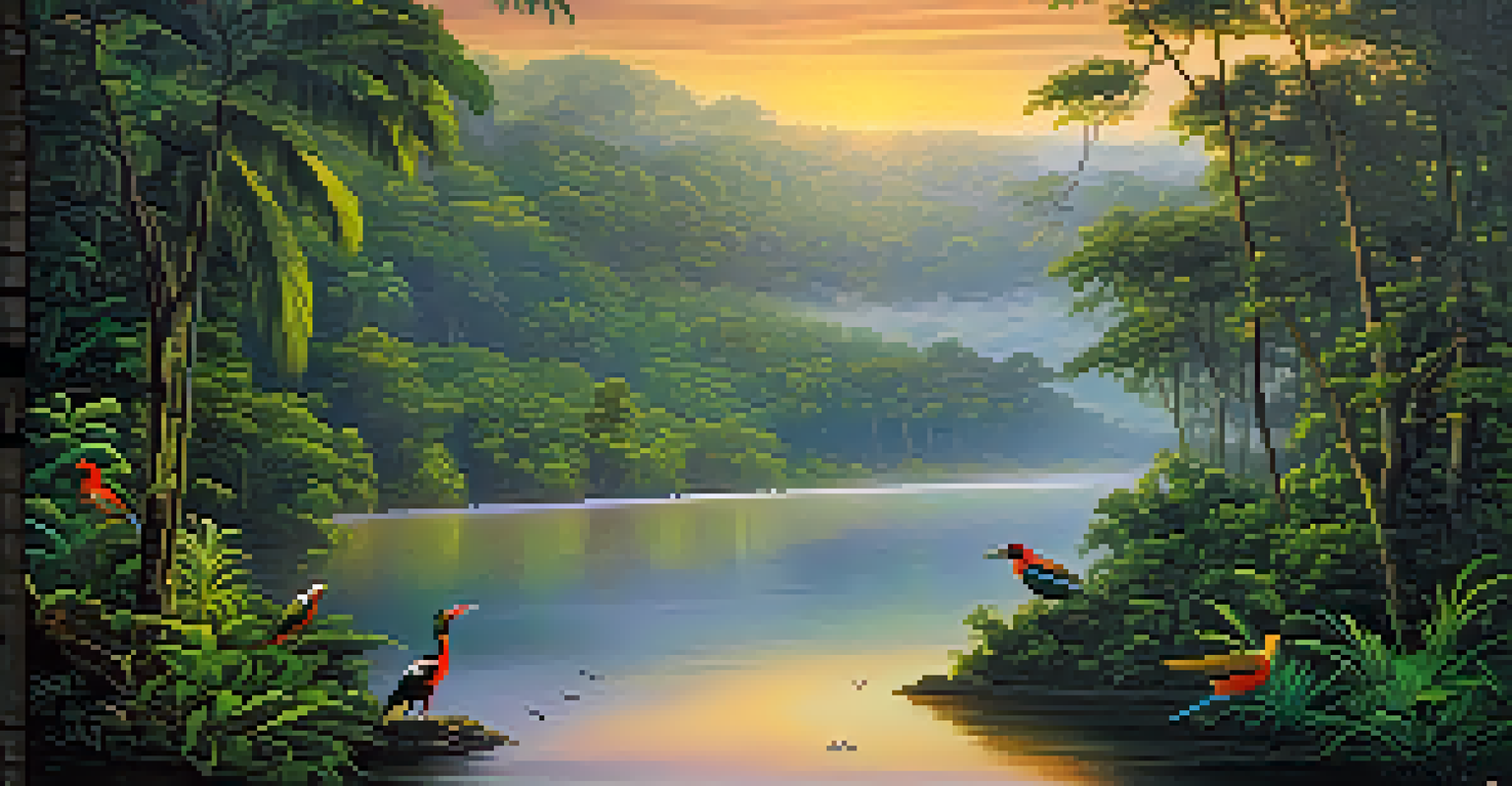Exploring the Richness of Brazilian Art: A Cultural Journey

A Glimpse into Brazil's Artistic Heritage
Brazil's artistic heritage is a vibrant tapestry woven from diverse influences, reflecting its rich cultural history. From indigenous art forms to colonial influences, each era has left a unique mark on the Brazilian art landscape. This blend creates a distinctive character that sets Brazilian art apart from other cultures, inviting exploration and appreciation.
Art is a reflection of society, and in Brazil, it serves as a powerful tool for expression and change.
In the heart of Brazil, indigenous art celebrates the deep connection between nature and spirituality. Artists use natural materials and traditional techniques to create stunning works that tell stories of their ancestors and the land. This connection is not just historical; it continues to inspire contemporary artists who seek to honor their roots while pushing boundaries.
Colonial art introduced European styles, which melded with local traditions to create something uniquely Brazilian. This fusion can be seen in the vibrant colors and dynamic forms of Baroque churches and the intricate designs of traditional pottery. As we journey through this artistic evolution, it becomes clear that Brazilian art is not static; it is an ever-evolving dialogue between past and present.
The Role of Brazilian Modernism
Brazilian modernism emerged in the early 20th century as artists began to break away from European influences and seek a distinct identity. This movement was characterized by a bold exploration of new forms and ideas, reflecting the country's social and political changes. Artists like Tarsila do Amaral and Oswald de Andrade challenged traditional norms, leading to a cultural renaissance.

Tarsila's work, for instance, is a celebration of Brazilian culture and identity, infused with vibrant colors and surrealist elements. Her iconic painting, 'Abaporu,' not only inspired the Modernist movement but also encapsulated the essence of Brazil's diverse landscapes and people. This shift towards modernism allowed artists to express their individuality while embracing their cultural heritage.
Brazil's Diverse Artistic Heritage
Brazil's artistic landscape is a unique blend of indigenous, colonial, and modern influences that reflect its rich cultural history.
The influence of modernism is still felt today, as contemporary Brazilian artists continue to explore and redefine what it means to be Brazilian. This ongoing evolution reflects the dynamic nature of Brazilian society, where art serves as both a mirror and a catalyst for change. As we delve deeper, we see how modernism paved the way for a flourishing artistic community.
Exploring Afro-Brazilian Artistic Expressions
Afro-Brazilian art is a powerful testament to the resilience and creativity of African descendants in Brazil. Rooted in the struggles and triumphs of their ancestors, this art form encompasses various mediums, including dance, music, and visual arts. It serves as a vital expression of cultural identity, connecting people to their heritage and history.
Brazilian art is a celebration of diversity, where each stroke tells a story of cultural richness and resilience.
One prominent example is the vibrant Candomblé rituals, which blend African traditions with elements of Catholicism. The colorful costumes and rhythmic movements not only celebrate spirituality but also showcase the rich cultural tapestry of Brazil. Through these expressions, Afro-Brazilian artists convey messages of resistance and pride, enriching the country's artistic landscape.
Today, many contemporary artists draw inspiration from their Afro-Brazilian roots, creating works that resonate with both local and global audiences. This fusion of tradition and modernity highlights the enduring legacy of African culture in Brazil. As we explore this dynamic realm, we uncover stories of strength, creativity, and cultural celebration.
The Impact of Brazilian Street Art
Brazilian street art has emerged as a powerful form of expression, transforming urban spaces into vibrant galleries. Artists like Os Gêmeos and Kobra have gained international recognition for their large-scale murals that often comment on social issues, politics, and cultural identity. This movement reflects the voice of the people, turning city streets into canvases for dialogue and change.
Street art in Brazil is not just about aesthetics; it is deeply rooted in community engagement and activism. Many artists use their work to address social inequalities and raise awareness about pressing issues such as poverty and violence. This grassroots approach fosters a sense of ownership among residents, inviting them to participate in the artistic process.
Social Change Through Art
Artists in Brazil actively use their work to address social issues and advocate for marginalized communities, making art a catalyst for change.
As we navigate the streets adorned with colorful murals, it becomes evident that Brazilian street art is a celebration of creativity and resilience. It challenges the status quo, encouraging conversations that might otherwise go unheard. This vibrant art form not only beautifies urban landscapes but also empowers communities to share their stories.
The Influence of Brazilian Music on Visual Arts
Music and visual arts in Brazil are intricately intertwined, with each influencing the other in profound ways. Genres like samba, bossa nova, and funk have inspired countless artists to translate the rhythm and emotion of music into visual expressions. This synergy creates a dynamic cultural environment where creativity flourishes across disciplines.
For example, the iconic album covers of Brazilian musicians often showcase bold colors and striking designs that reflect their musical style. Artists like Romero Britto have gained fame for their playful, pop-art-inspired pieces that resonate with the infectious energy of Brazilian music. These visual interpretations enhance the listening experience, creating a holistic cultural experience.
As we explore this interplay between music and visual arts, we see how they collectively shape Brazil's identity. This artistic dialogue enriches our understanding of Brazilian culture, demonstrating that art transcends boundaries and unites people through shared experiences. It's a vibrant reminder of how interconnected our creative expressions can be.
The Role of Brazilian Art in Social Change
Art in Brazil has historically played a crucial role in advocating for social change and justice. Artists have used their platforms to challenge societal norms, address inequalities, and raise awareness about marginalized communities. This commitment to social issues is evident in various art forms, from traditional paintings to contemporary installations.
For instance, the work of artists like Vik Muniz highlights the struggles of the poor through innovative projects that elevate discarded materials into art. By transforming waste into beauty, Muniz not only critiques social conditions but also empowers communities to engage with their surroundings creatively. His work serves as a powerful reminder of the potential for art to inspire change.
Innovation in Brazilian Art
The future of Brazilian art is being shaped by digital technologies and new mediums, allowing for greater creativity and audience engagement.
As we delve into the intersection of art and activism, we see how Brazilian artists are fearless in their pursuit of truth and justice. This legacy of social responsibility continues to shape the artistic landscape today, encouraging new generations to use their voices for positive impact. Art becomes a vehicle for dialogue, fostering a culture of awareness and change.
The Future of Brazilian Art: Trends and Innovations
The future of Brazilian art is brimming with innovation and exciting trends that reflect the country's cultural evolution. With the rise of digital art and new technologies, artists are exploring unconventional mediums to express their visions. This shift opens new avenues for creativity, allowing for greater experimentation and collaboration.
Emerging artists are increasingly incorporating elements of virtual reality and augmented reality into their works, creating immersive experiences that engage audiences in unique ways. This blending of technology and art not only captures the attention of younger generations but also challenges traditional notions of artistic expression. The digital realm becomes a playground for creativity and exploration.

As we look ahead, it’s clear that Brazilian art will continue to thrive and adapt, reflecting the complexities of contemporary society. The fusion of traditional techniques with modern technologies promises a rich tapestry of artistic innovation. This evolution invites us all to engage with and celebrate the ever-changing landscape of Brazilian art.